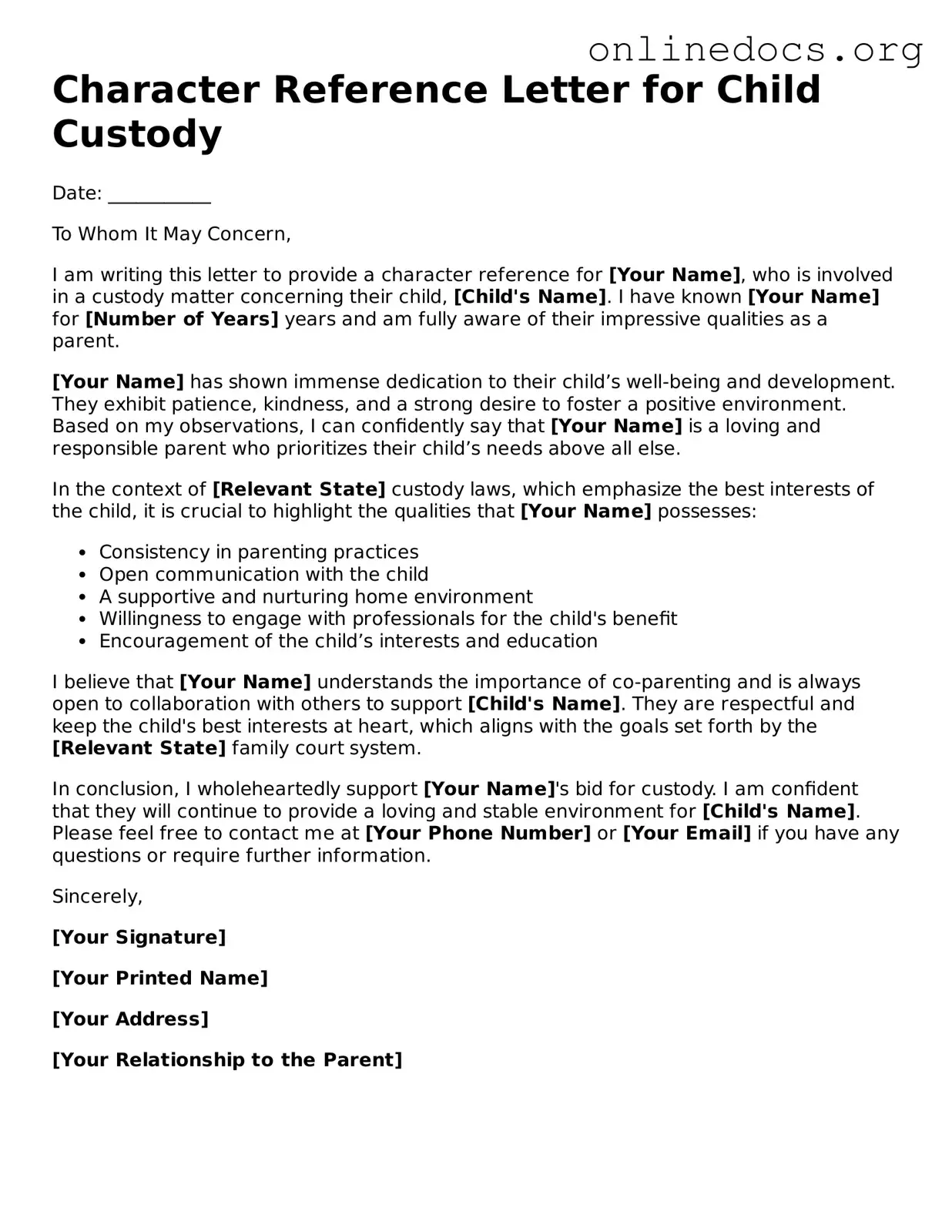A character reference letter for child custody shares similarities with a personal reference letter. Both documents aim to provide insight into an individual's character and suitability for a specific role or responsibility. A personal reference letter typically supports a person's application for a job, rental, or other opportunities. It focuses on the individual's strengths, work ethic, and reliability, much like a character reference for custody emphasizes parenting abilities and overall character in the context of child-rearing.
Another related document is the letter of recommendation. While often used in academic or professional settings, a letter of recommendation can also highlight a person's qualities relevant to parenting. It serves to endorse an individual's capabilities and moral standing, paralleling the intent of a character reference letter in custody cases. Both documents aim to bolster the credibility of the individual being assessed.
A Sorority Recommendation Letter is a document written by an alumna of a sorority to recommend a potential new member to her former chapter. This letter highlights the candidate's qualifications, personal attributes, and reasons for wanting to join the sorority. For those looking for a structured approach to drafting such essential documents, resources like smarttemplates.net/fillable-sorority-recommendation-letter/ can provide valuable templates and guidance.
The affidavit of support is another document that bears resemblance. This legal document demonstrates a person's financial capability to support another individual, often in immigration contexts. Although its primary focus is financial, it can indirectly reflect on the individual's character and reliability. In custody cases, the character reference letter similarly seeks to affirm the character of the parent, albeit in a more personal and relational context.
Letters of support for adoption also share common ground with character reference letters for custody. Both types of letters express the writer's belief in the individual's ability to provide a loving and stable environment for a child. They aim to reassure the court or agency of the person's suitability for a significant responsibility, whether it be custody or adoption.
A parenting plan may also be considered similar. While it outlines specific arrangements for child custody and visitation, it often includes a description of each parent's strengths and contributions to the child's welfare. A character reference letter complements this by providing a third-party perspective on the parent's qualities and abilities, reinforcing the information in the parenting plan.
Testimony in court can be likened to a character reference letter. Witnesses provide statements regarding a person's behavior and suitability in various contexts, including parenting. Both documents aim to present a truthful account of the individual's character, supporting the case being made for or against custody arrangements.
Performance evaluations, particularly in educational or employment settings, also bear resemblance. These evaluations assess an individual's abilities, strengths, and areas for improvement. A character reference letter for custody similarly evaluates a parent's abilities, focusing on their nurturing qualities and commitment to their child's well-being.
Letters from community members or leaders can also be compared to character reference letters. These letters often attest to an individual's involvement and reputation within the community. They serve to highlight the positive traits of the individual, just as a character reference letter emphasizes the parent's qualities that make them suitable for custody.
Finally, a statement of purpose, often used in academic applications, is another document that shares similarities. It outlines an individual's motivations and goals, providing insight into their character. A character reference letter, while focused on parenting, similarly reveals the individual's values and intentions regarding their role as a parent, making both documents integral in assessing character and suitability.
